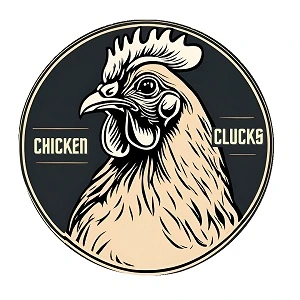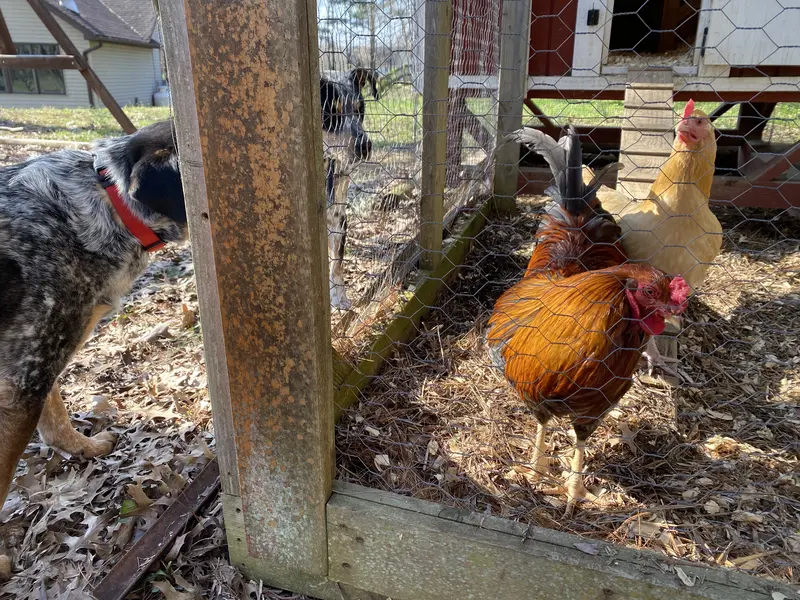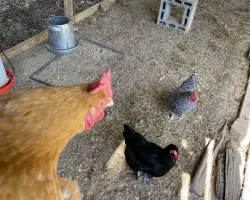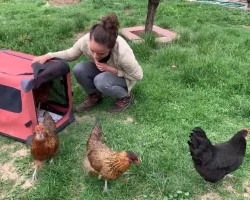If you are a chicken keeper, you must be familiar with the fact that chicken predators will come after hens. Every day requires the protection of your chicken flock and this begins with proper predator identification. Chicken predators are everywhere, and you can’t kill them all but you can prevent them. The following 10 predators comprise the list of potential chicken threats together with their protective strategies.
1. Foxes – Clever and Relentless Hunters
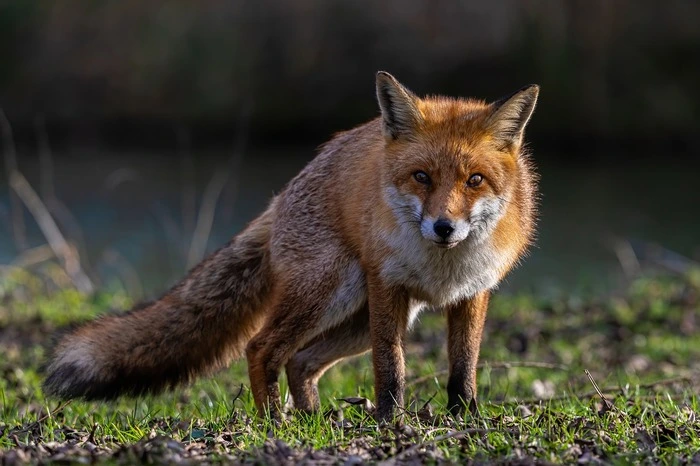
Foxes are fast, clever, and determined. They attack their prey mostly during darkness although they will also hunt during daylight hours. A single fox can rapidly kill various chickens during its hunt but they take just one bird with them. Foxes bury their kill after taking it and eating most of it. Foxes’ tracks can be identified easily as their front and hind tracks overlap. Read more about fox behavior at Wildlife Trusts.
How to protect your flock:
- Replace your chicken wire with a strong wire mesh (hardware cloth) as an effective protective barrier.
- A combination of motion-sensory lighting will help to prevent visits from predators during the night hours.
- The last line of defense against foxes is having guardian animals including dogs and geese to create intimidation toward them.
2. Raccoons – Crafty Problem Solvers

Raccoons are problem solvers. The animals excel at opening easy-to-crack doors while extending their bodies through mesh barriers to steal chickens. The predators bite off bird heads while leaving the rest of the body untouched. They can reach the chickens by pulling the wire fencing apart. Their tracks can be identified by hind feet tracks being longer than front feet tracks.
How to protect your flock:
- All coop doors must have raccoon-proof latches with carabiner clips as they provide suitable protection.
- Each opening should be secured by hardware cloth which has a ½-inch mesh.
- Nighttime food supply should be avoided to keep raccoons away.
- The nearness of raccoon tracks outside the coop serves as a way to observe their movements.
3. Hawks – Deadly Aerial Threats

Hawks prefer to prey from heights aiming to capture chickens while they are exposed to daylight. They attack usually in spring as they are looking to stock up their food supply.
How to protect your flock:
- You should install overhead netting and wire above the run’s area.
- The coop should include numerous hiding spaces that poultry can access.
- Installing CDs or other reflective objects will act as a deterrent against hawk attacks. Did you know you can even buy ‘bird scare tape’?
- A rooster positioned within your chicken flock will act as an alert for potential threats.
- Hens should stay within a covered enclosure during hunting season peaks.
4. Owls – Stealthy Night Hunters
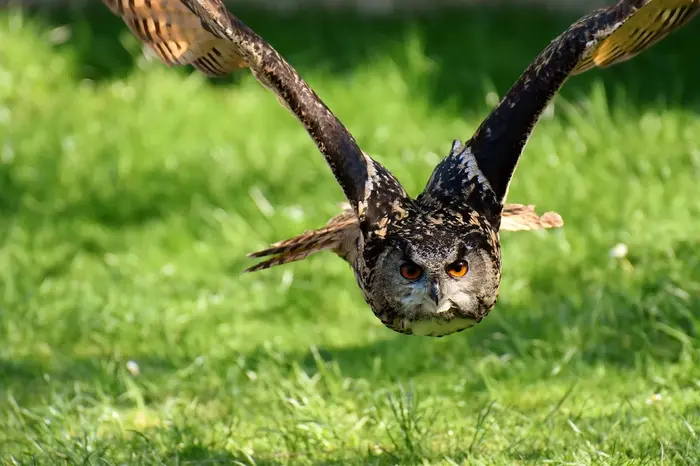
The hunting patterns of owls correspond with nighttime habits because these birds use this time to capture young or small chickens even when perched in open areas. They can only take one chicken per visit and they usually eat the breast first. A mutilated carcass and scattered feathers are usually seen at their sights of larger kills.
How to protect your flock:
- Securely lock the coop doors just before dusk begins.
- The access points for windows and vents should be protected by strong wire mesh.
- Chickens should never remain outside the premises at night.
- Placing owl decoys outside will work as deterrents against hunting predators.
For more information on owls, see Audubon Society.
5. Coyotes – Strong and Persistent Predators
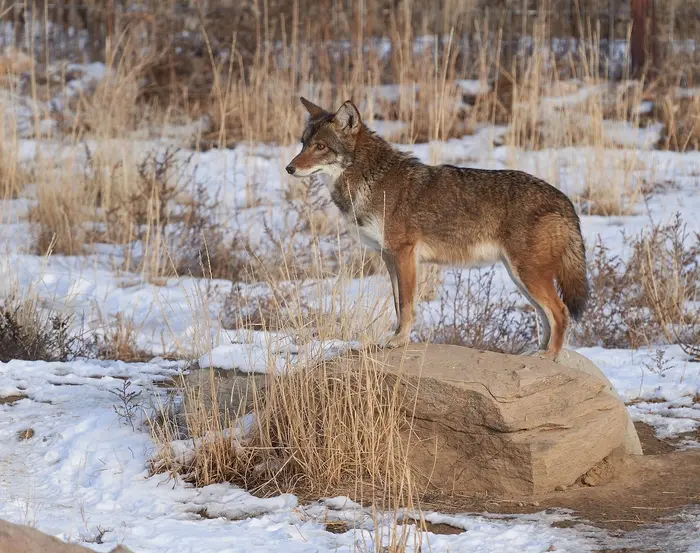
Coyotes are strong and fast. The animals will use digging below barriers and jumping over poorly constructed fences to access their targets. They can attack even when people are nearby and they keep coming back after successful attacks. Their tracks can be identified by their perfect stepping as their front and back tracks overlap like foxes.
How to protect your flock:
- Build fences that reach a minimum height of 6 feet along with an outward curve on the highest point.
- To prevent digging you should either bury your fencing to maximum depth or create an apron-style barrier.
- Don’t let chicken go outdoors during the prey-rich times of dawn and dusk which are coyote hunting periods.
- Solar-powered predator deterrents equipped with red lights which flash are effective for deterring predators.
6. Weasels – Small but Deadly Killers

Weasels might look small but they are very dangerous. They kill for sport and they can easily wipe out your entire flock overnight. Their tracks are like small paw prints with pointy toes and they usually target the head of the bird or the back of the neck.
How to protect your flock:
- Seal the gaps larger than quarter an inch as weasels can sneak out into gaps smaller than quarter of an inch sometimes.
- Use reinforced locks and proper solid doors.
- The coop should be kept well lit at night. You can use motion sensor lights as well.
- If you spot weasels nearby, place traps around the coops to catch them.
7. Snakes – Silent Egg and Chick Thieves
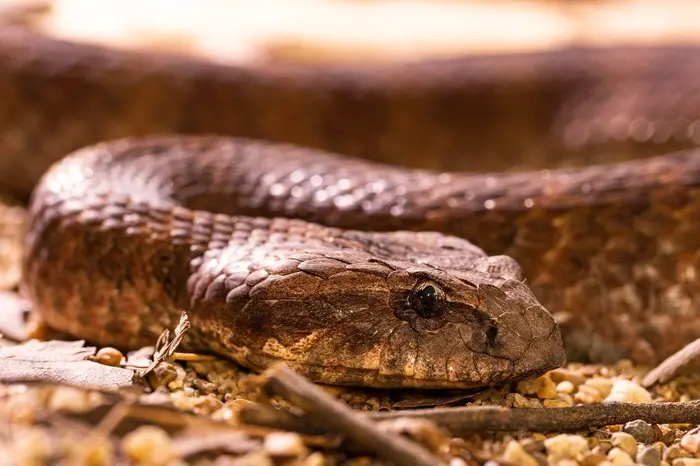
Snakes are usually looking for eggs and chicks but they can also target small hens. They can be seen resting in the nesting boxes after swallowing the eggs. You can try to identify the place from where the snake entered by looking for their slither parts in the mud or sand near the coop.
How to protect your flock:
- Keep small chickens in indoor brooders till they grow bigger. Then move them to the coop.
- Keep collecting eggs frequently and regularly to reduce the attraction of snakes.
- Keep the grass around the coop short and remove any hiding spots nearby.
- Use crushed eggshells or sulfur around the coop as they are snake deterrents and easily available.
8. Dogs – Unexpected Threat from Pets and Strays
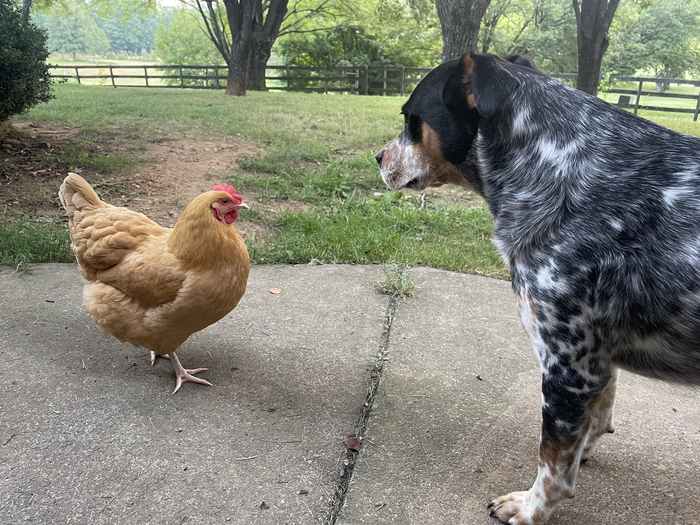
Stray dogs or wild dogs definitely hunt chickens. Even friendly pet dogs can be a threat. They like to kill chickens for fun as well. Dogs can kill for fun and they usually bite and injure the chickens. They don’t eat chicken much but they can kill entire flocks if they get the opportunity. You can identify the dog tracks by knowing that their hindfoot tracks and frontfoot tracks are off set from each other.
How to protect your flock:
- If you have pet dogs, train them early to respect chickens and protect them in your absence.
- Separate the dogs from the flock by using strong and secure fencing.
- Never leave your chickens around untested or new dogs or the ones who have not been trained yet.
- Keep the boundaries higher to prevent neighboring and stray dogs from getting inside.
9. Cats – Opportunistic Hunters

Cats are not scared of anything. Domestic cats usually leave full size hens alone but take chickens and bantams. Some angry cats can harm the hens as well. They usually eat their kill and they can carry their kill as well. Their tracks are similar to foxes i.e perfect stepping but without claw marks. BobCats are angry cats found in rural or less populated areas and they rarely leave their evidence after a kill.
How to protect your flock:
- Use a secure brooder or enclosed run to keep chickens and hens.
- Look out for stray or feral cats in the area. They can be lethal.
- Make hiding spots for hens nearby at various places so they can hide quickly in case of any danger.
- Use motion sensor sprinklers and motion sensor flood lights to keep the cats away.
10. Rats – Sneaky Egg and Chick Predators
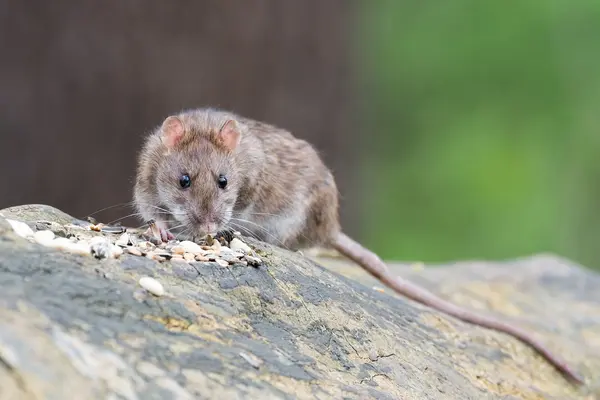
Rats bite everything. They are very sneaky and they go after chickens and eggs. They can attack the hens as well when they are sleeping. You can see different signs for the presence of rats in the hen house including tracks with a tail trail and some mouse like droppings as well.
How to protect your flock:
- To avoid attracting the rats towards the feed, store it in metal containers.
- Use traditional snap traps or bait stations to catch the rats. These traps should be outside the coop only so that they don’t harm chickens or hens.
- Remove food scraps everyday and keep the coop clean.
- Look for small holes around and inside the coop from where rats can enter. Patch them up properly.
How to Create a Predator-Proof Chicken Coop?
Creating a 100% Predator-Proof Chicken Coop is impossible. But we can try to make our chicken coop as secure as possible by using these tips as they will make it almost 99% Predator-Proof if not 100%.
Use the Right Materials
- Instead of using a chicken cloth, use a half inch hardware cloth.
- Using extra wood or metal, reinforce weak spots.
Secure Entrances and Exits
- Install latches that require two-step opening as they are secure and predator-proof. Lock chickens up at night always.
- You can use automatic coop doors as well for extra security.
Protect from Digging Predators
- Install a predator apron or bury the fencing for upto 12 inches.
- Take large bricks and rocks and place them along the fence line.
- In order to keep burrowing animals out, use raised coops.
Cover the Run
- To stop aerial attacks, use netting or wire to cover the run.
- Make sure that perches are inside the covered area.
- Near the coop, add motion sensors and deterrents to keep the predators away.
Keep the Area Clean
- Remove unclean or uneaten food from the area all the time.
- Keep the coop dry by moping it regularly and cleaning any water spills. It will help in avoiding rodents.
- Trim the grass to clear the hiding spots.
If you want to keep an eye on your flock at all times, you might want to install a night vision smart camera.
Final Thoughts
Chicken predators are everywhere, and they are trying to make a move on your flock as soon as they can. Now it is up to you to use the tips above, and keep your flock safe!
If you want to learn more about setting up a safe and complete chicken coop, read our Ultimate Chicken Coop Guide.
